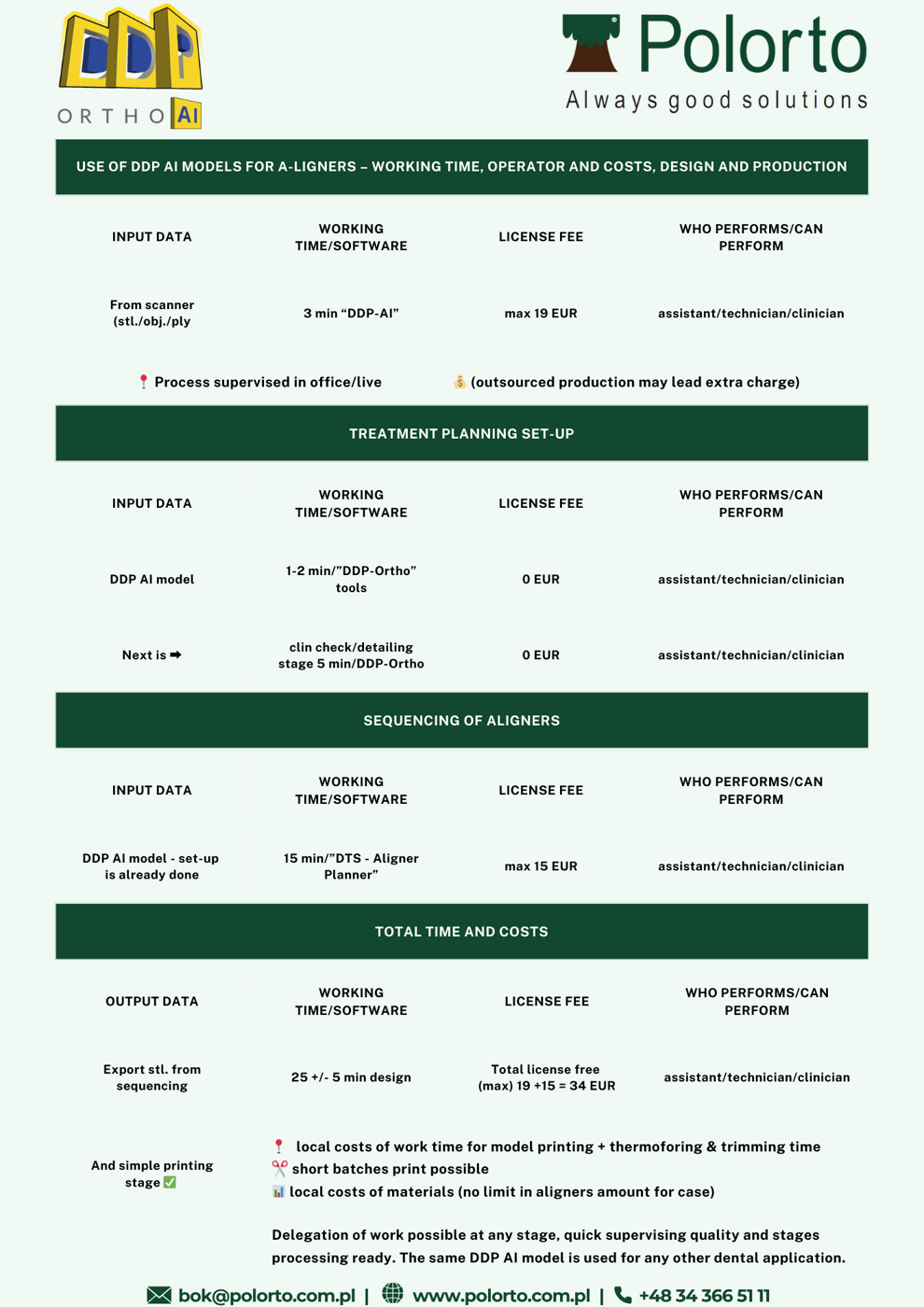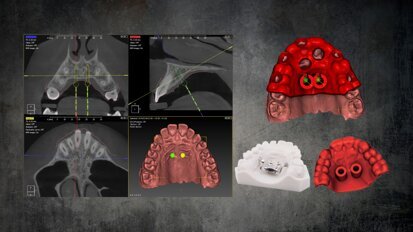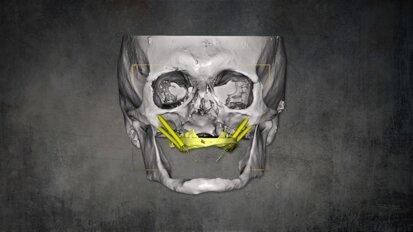The free DDP-Ortho system supports every stage, enabling diagnosis, personalised digital aligner treatment planning and comprehensive monitoring of treatment progress. Technicians use Digital Technical Studio (DTS) software, particularly the Aligners Planner module, which is a crucial component of the process. For orthodontic technicians, DTS provides tools for precise aligner customisation. The Aligners Planner module facilitates the planning of each step in tooth movement and ensures that the effect of each aligner on the treatment outcome can be monitored. On-site aligner production allows treatments to be fully individualised and ensures an immediate response to any changes.
Clinical applications and patient benefits
In clinical practice, DDP solutions deliver tangible benefits. For example, one patient preparing for an important event required a quick improvement in tooth alignment. Using DDP-Ortho and in-house aligner production capabilities, the first aligners were delivered just a day after scanning. This rapid turnaround was a significant advantage for both the patient and the practice.
In another instance, a patient who had previously used commercial aligners noted a marked improvement. There was no need to wait for external shipping and there was the added benefit of personalisation with quicker access to subsequent treatment stages.
The benefits of the DDP-Ortho system extend beyond time savings and treatment flexibility; the use of the system also significantly reduces costs. In-house production eliminates the need for external laboratories, cutting expenses associated with gypsum models, licensing fees and tiered pricing based on clinic size. This allows all practices to operate at the same cost, regardless of the number of cases, enabling the provision of more affordable solutions while handling an increased volume of cases.
Advancing digital dentistry with DDP-Ortho
Additionally, DDP-Ortho integrates seamlessly with other areas of digital dentistry, offering new opportunities for expanded services. Clinics can work in an interdisciplinary way, extending offerings to areas such as implantology and maxillofacial surgery.
Implementing DDP-Ortho has given practices a modern, digital edge. The use of the latest technologies enhances professional image and attracts patients seeking fast, convenient and digitally supported solutions. Younger patients, in particular, are drawn to this innovative approach, as it aligns with their familiarity with smartphones and other digital tools.
DDP-Ortho also supports clinic and laboratory growth through training and support groups, ensuring smooth integration into daily practice. The technology provides orthodontists with complete independence and flexibility in managing aligner treatments. It is not only a convenient tool but also an excellent investment in building a strong brand and maintaining a competitive market position.



 Austria / Österreich
Austria / Österreich
 Bosnia and Herzegovina / Босна и Херцеговина
Bosnia and Herzegovina / Босна и Херцеговина
 Bulgaria / България
Bulgaria / България
 Croatia / Hrvatska
Croatia / Hrvatska
 Czech Republic & Slovakia / Česká republika & Slovensko
Czech Republic & Slovakia / Česká republika & Slovensko
 France / France
France / France
 Germany / Deutschland
Germany / Deutschland
 Greece / ΕΛΛΑΔΑ
Greece / ΕΛΛΑΔΑ
 Hungary / Hungary
Hungary / Hungary
 Italy / Italia
Italy / Italia
 Netherlands / Nederland
Netherlands / Nederland
 Nordic / Nordic
Nordic / Nordic
 Poland / Polska
Poland / Polska
 Portugal / Portugal
Portugal / Portugal
 Romania & Moldova / România & Moldova
Romania & Moldova / România & Moldova
 Slovenia / Slovenija
Slovenia / Slovenija
 Serbia & Montenegro / Србија и Црна Гора
Serbia & Montenegro / Србија и Црна Гора
 Spain / España
Spain / España
 Switzerland / Schweiz
Switzerland / Schweiz
 Turkey / Türkiye
Turkey / Türkiye
 UK & Ireland / UK & Ireland
UK & Ireland / UK & Ireland
 Brazil / Brasil
Brazil / Brasil
 Canada / Canada
Canada / Canada
 Latin America / Latinoamérica
Latin America / Latinoamérica
 USA / USA
USA / USA
 China / 中国
China / 中国
 India / भारत गणराज्य
India / भारत गणराज्य
 Pakistan / Pākistān
Pakistan / Pākistān
 Vietnam / Việt Nam
Vietnam / Việt Nam
 ASEAN / ASEAN
ASEAN / ASEAN
 Israel / מְדִינַת יִשְׂרָאֵל
Israel / מְדִינַת יִשְׂרָאֵל
 Algeria, Morocco & Tunisia / الجزائر والمغرب وتونس
Algeria, Morocco & Tunisia / الجزائر والمغرب وتونس
 Middle East / Middle East
Middle East / Middle East







































To post a reply please login or register